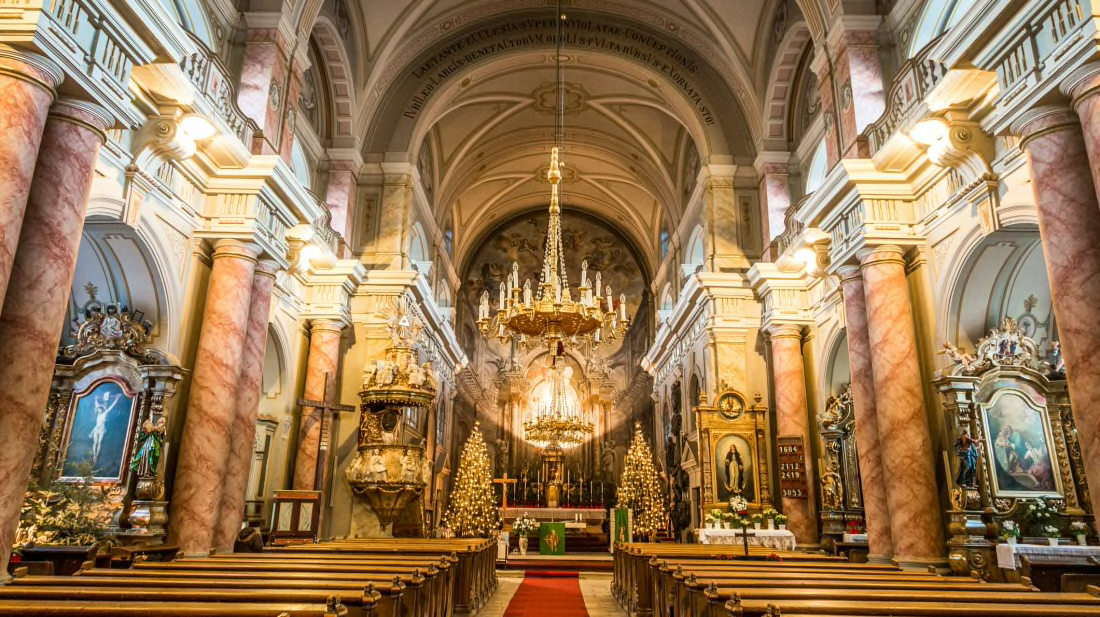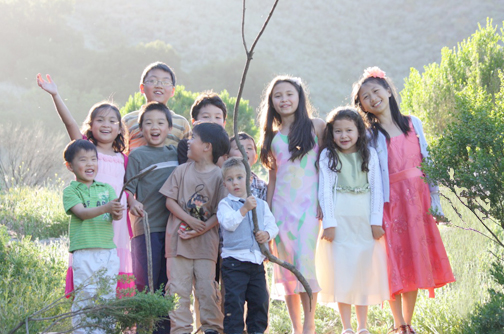Free backing files for 1000's of public domain hymns. Home First Line of Hymns. PROFESSIONAL HUMANS. Psych/Punk/Garage trio from Portland, OR.
- European Langaugesmusic For Your Church Services
- European Langaugesmusic For Your Church Services Online
- European Langaugesmusic For Your Church Services Catholic
Learn why and how congregations are using multiple languages in the same worship services—rather than having each cultural group worship alone in its own language.
Ideally, people in multicultural churches realize they need each other to reflect Christ’s body, each doing its part. Practically, worshiping as one takes work, especially when worshipers speak different languages.
You might say that the people at St. Michael Catholic Church in Milwaukee had the advantage of necessity when they began welcoming multilingual worship 25 years ago.
European Langaugesmusic For Your Church Services
“Everybody really needed each other. Older white members saw there was nobody like them left in the central city. They saw their church was going to close. So when a few Hmong families asked, ‘Can we worship in your space?’ the older people said, ‘Come on in!’ A few years later, Lao speakers came and then Spanish speakers,” says Barbara Tracey, liturgy and music coordinator at St. Michael and nearby St. Rose.
Tracey and others from multilingual churches say your congregation can enjoy a similar spirit of mutuality. You’ll want to notice what worshipers have in common, talk and serve together, and create worship where everyone understands at least some parts.
What do you have in common?
As your church moves toward an “every tribe and tongue” identity, you may find that long-time members and newcomers share similar Christian traditions. You’ll also experience change and discomfort.
“It was like the Tower of Babel, or maybe ‘Babble,’ when I came here in 1994. We had to translate everything. The one thing that kept us together was the Catholic liturgy, because it’s so regimented. We’d do different parts in different languages and then translate,” Tracey recalls.
Resurrection Lutheran Church in Oakland, California, has welcomed so many immigrants that the congregation is now more than 60% African. “Coming in this country was a challenge for most of us to choose which church to go. We were careful not to lose our belief and faith we grew up with,” says Erick Byorwango, a Tanzanian Lutheran who directs Resurrection’s Africa One choir.
“When I started coming to this church, I realized that they share a lot of stuff we have in common. The congregation was mixing with different people from different nations, sharing the word of God,” he adds.
Church planters Charles and Glenda S. Brown started The Crossing Baptist Church in a new housing development in Mesquite, Texas. Compared to Mesquite as a whole, new residents were more likely to be white, college educated, and married with children. Yet, Glenda Brown explains, “God sent Hispanics, African Americans, singles, and racially mixed families to The Crossing. Some brought friends and many stayed.” Newcomers often had their own styles of greeting, praying, and time use.

“We realized God wanted us to worship in every culture. Those who have become comfortable with multicultural worship have done so by seeing the truth of God's Word through the lens of the Spirit’s activity among us. If God has made us in his image, we will begin to understand more about God's nature when we learn to see God's image in the testimonies and worship of believers different from ourselves and our traditions,” she says.
Talk and serve together
Kai Vang, a first generation Hmong American, cantors and assists Barbara Tracey at St. Michael. In a recent Pastoral Music Magazine article, he explained how black, Hispanic, Hmong, Lao, and white communities have contributed “to create the church we are today.”
Each community chose a leader. Leaders worked together to explain their worship practices. Hearing each other’s views made each community want to know the others better. “The best way of educating oneself is to talk to the people. Ask about each person's story and how that person came to be where he or she is today,” Vang wrote.
Besides talking, praying, and singing together, St. Michael members enjoy frequent potlucks. And everyone pitches in twice a year to make 50,000 eggrolls. Proceeds help operate the church. “We have 150 to 200 volunteers from all cultures working together. They get orders at their factories or schools. Then we come and chop, roll, fry, count, and deliver,” Tracey says.
“When you work side by side, you ‘learn’ people. When you see someone you’ve scrubbed the floor with ‘at eggrolls,’ they greet you as they’d greet a friend from their community. You realize it’s different than how you would greet, and it becomes part of how we see Christ in others,” she says.
Resurrection Lutheran pastor Lucy Kolin uses relational strategies from faith-based community organizing to help her church become multicultural and multilingual.
“I’ve often observed groups get on a bandwagon or mandate for an issue. Immediately that removes the issue from the person. So when, as always, there are wrinkles or bumps, they don’t have a habit of talking with each other to find out what happened and work together for a solution. At Resurrection, we’ve always made a habit of having one-to-one conversations.
“We also do research meetings. We might gather people in the community who have experience teaching worship, say from Tanzania and a local seminary. We ask about what they know and have experienced, their practices, who has responsibility to plan, and how other people’s ideas get into the mix of worship planning,” Kolin says. These meetings help people translate actions as well as words.
Something everyone understands
These churches in Milwaukee, Oakland, and Mesquite have begun using multiple languages in worship, whether in song, prayer, or spoken responses. They use visuals for wordless communication.
Resurrection’s Africa One choir sings in Swahili, a familiar language for East African members. Byorwango says the congregation’s openness to African rhythms and beats deepened relationships among older and newer members. Now, he says, the choir is “blessed to have American born singers who are interested to sing in Swahili.”
Some Sundays Resurrection does worship almost all in Swahili, even the sermon. “We borrow a local community organization’s translation equipment so African Americans and European Americans can hear simultaneous translation to English,” Kolin says.
During a year of multicultural events and worship services, people at The Crossing sang and heard Scripture in different languages. They learned global songs. Glenda Brown recalls the congregation’s “sweet spirit, no complaining,” when Josh Davis of Proskuneo Ministries taught them songs that are bilingual or multilingual within the same verses, such as “Cada pueblo, every people, every tongue, cada lengua, Tuyo el reino, Father, let your kingdom come.”
In Milwaukee, St. Michael has a Spanish mass from fall through spring. English, Hmong, and Lao speakers worship together. Once a month and all summer, all groups worship together. They sing songs in each language. The first Bible reading is often in Spanish, the second in Hmong, and the gospel proclamation in Lao, followed by an English homily. People bring Bibles and follow along in their own languages. For a given liturgical season, everyone might do the “Holy, Holy” in Hmong and the “Lamb of God” in Lao.
St. Michael uses multicultural visuals, such as a large Asian ceramic bowl as the baptismal font and fabrics from different cultures on the altar and ambo. “We’ve done away with heavy censers. Instead we use a beautiful brass rice bowl with incense sticks, a more familiar form of incense for former Buddhists,” Tracey says
Learn More
- St. Michael Catholic Church in Milwaukee began as a church of immigrants. Hmong American Kai Vang writes in Pastoral Music about navigating multiple identities at home and in worship.
- Proskuneo Ministries offers multilingual, multicultural worship resources, events, and training.
- Read and discuss the book Every Tribe and Tongue: A Biblical Vision for Language in Society by Michael Pasquale and Nathan L. K. Bierma.
- Buy the hymnal supplement Global Songs for Worship, which has songs from around the world for every part of worship
- Watch a 2011 Symposium vespers service with songs in many languages (service starts at 6:15). Multicultural worship experts presenting at the next Calvin Symposium on Worship, January 26-28, 2012, include John Bell, Moses Chung, James Krabill, Juan Francisco Martínez, and Anne Zaki.
- Mosaix Global Network is a relational network for leaders pursuing a multiethnic economically diverse church for the sake of the gospel.

- Read related stories and conversations on ethnodoxology and indigenous worship.
Start A Discussion
- There’s a difference between a fact and the meaning we attach to that fact. Describe a multicultural experience where you and someone else interpreted the same action, event, or statement in very different ways.
- When have you stepped out of your comfort zone to talk with or become friends with someone from another culture? Who had the most power in this situation?
- If most or all of your congregation is from the same language, culture, or background, what are the reasons for or against using other languages or multicultural music in your worship?
Featured Links
- Embracing a Diverse and Global Church
- Global Songs for Worship
- Indigenous worship
Comments
Note that you need a Facebook account in order to add comments.If you don't see a place above to enter or view comments, it may be due to your browser's security or privacy settings. Please try adjusting your settings or using a different browser.
European Langaugesmusic For Your Church Services Online
European Langaugesmusic For Your Church Services Catholic
